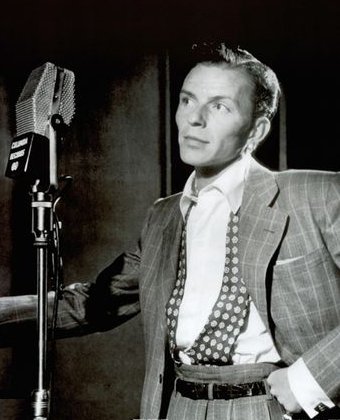 |
 Stranger in the Night:
Stranger in the Night:
The Story of Sinatra and Hoboken and What Went Wrong
By Anthony De Palma, Jr.
The House on Monroe Street
Sinatra and Hoboken weren't always distant. During the first phase of his remarkable multiphase career, the part where he made contemporary American history by crooning and swaying so that teenaged girls, packed into the Paramount Theater in New York, screamed, fainted, and wet their panties, Sinatra and his publicity machine milked Hoboken for every drop of pathos the American public would buy. They presented him as a poor kid from the slums of Hoboken, a kid who was just like everybody else in those post-Depression, early war years. His was the American success story all those young people, whose own future had been swiped by another stinking war, dreamed about for themselves. Sinatra had been a scrapper and a brawler as a kid in the ethnic bowels of grimy Hoboken. At school he sang with the glee club, played mean basketball, and managed the football team. He quite high school to go to business school, and then landed a job as a sportswriter for a local newspaper. Sinatra's press agent, manager, and substitute father, George Evans, pumped out soapy stories, and the fan magazines devoured them. Evans even brought Sinatra back to Hoboken once to take a whole new set of publicity shots, showing him in boxing trunks, behind the desk at the paper, and in the high school gym showing off his style. America had its original working-class hero.
Of course, the people in Hoboken knew this was all a lot of bunk. Down on Monroe Street, where Sinatra had been born on a snowy December Sunday in 1915, neighbors read about how the poor immigrant family lived in a crowded tenement hard by the docks and the Erie-Lackawanna tracks, and they wondered. From 415 Monroe Street, you can't even hear the wailing horns of the big steamers, and the railroad tracks are a half-city away. The four-story, eight-family building was only ten years old when Sinatra was born. It was typical of the wooden housing that would eventually become today's slums, but back then it was new and clean. The water was cold and the bathroom was in the hallway, but many of Hoboken's buildings were like that, and in the eyes of the newcomers from the old country, it wasn't bad at all.



|
|
 |